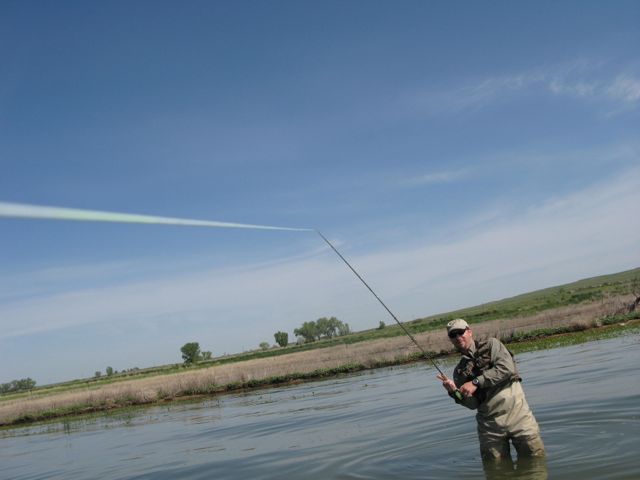
In the first two parts of this three part series we talked about the South Platte River and carp behavior in general. In our third installment, we’ll look at what fish you should avoid and what fish you should key in on – as well as some basic strategies for presenting a fly to a feeding carp. Lastly, we’ll talk about some basic fly patterns that should get you ready to hit the Denver South Platte River.
Fish you don’t want to cast to:
Cruising fish– you will often single fish or groups of two or three moving at high rates of speed. These fish will rarely eat a fish. Cruises are easy to recognize do to their quickness in speed and the aggressiveness of their direction changes. They do not appear to be feeding.
Sunning fish– if you see carp at the top of the water column not moving, especially on a sunny day, move on. Most likely they will spook when your fly hits the water or simply ignore your presentation.
Resting fish– especially in the late fall, winter or early spring you will find fish that are almost completely sendintary. These fish will most likely ignore your presentation or spook.
Spawning fish– these are fish that are chasing one another or breaching the water in typical spawn behavior. A quote to think about from Lake Michigan Great Kevin Morlock: “I like pizza… but not when I’m having sex.”

Fish you want to cast to:
Feeding fish - Fish with their heads down who are working a consistent line or direction. Cast to fish that appear to be investigating cracks and crevices between rocks.
Daisy Chaining Fish.- Sometimes you will find two or three fish following fish that are kicking up debris with their spawning behavior. Cast behind the spawning fish.
Circulators or fish exploring a flat- You will sometimes find fish that leave a faster moving run, move up onto a flat to explore and then move back to the faster run. These carp are usually opportunistic feeders.
Fish in a run– sometimes you can find carp that feed like trout in faster moving water. Swing a fly to this fish
The approach – most people blow their shot at a carp before they even begin stripping line off their reel. Approach with stealth, be quiet and avoid moving rocks, breaking branches, casting a shadow over the fish etc. Fish can become aware of your presence from 100 ft away.
The presentation– one of the most effective ways to hook a carp is to follow this 10 step process:
1) Identify a feeding carp
2) Note the speed the fish is moving
3) Identify the direction it is moving
4) Watch the fish’s behavior
5) Calculate where the fish will be in 15-30 seconds based on speed and direction
6) Factor in the speed of the water
7) Make a cast and present your fly in a way that when the carp reaches the area in 15-30 seconds they come upon your fly and it is still in the water
8) Once the fish is within a “dinner plates” distance of your fly, strip
9) Watch the fish eat your fly
10) Strip set – hold on

Suggested patterns: Trouts Fly Fishing has a great selection of carp flies in the shop and available online. Here are a few to check out: Crazy Dad, Brasso's Brandy Candy, Crazy Dad, Long Strip Crayfish, Barry's Carp Fly, Barry's Carp Bitter, Zimmerman's Backstabber, Hogan's Carp Bait, Morlock's Carp Breakfast, Egan's Headstand, Onyx Agent, Clouser Swimming Nymph.
Trouts Guide Service offers fully guided trips to chase carp both in the Denver South Platte and surrounding lakes and ponds. Barry Reynolds runs our Carp on the Fly program – give us a call today to book a day on the water - 877.464.0034.



